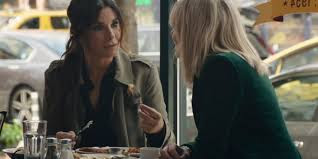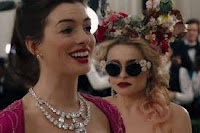George RR Martin thought he had started a trend when he
allowed Eddard Stark to get executed in the second book. Betrayed and vocal fans
stopped reading right when secondary characters like bastards and dwarves stepped
up to fill the void.
Fans who followed the Game of Thrones TV series should have
seen the execution coming, since Sean Bean seldom makes it to the second reel
(Lord of the Rings, Golden Eye, The Island). There’s even an online game for
how Bean will die in his next movie.
By way of example for those who are NOT Game of Throne fans…
The Conners on TV without Roseanne is like The Jackie
Gleason Show without Gleason.
We see clearly how secondary (in talent) the
other characters are even after decades of watching them grow up on screen.
And now we have the final season of House of Cards without
Frank Underwood because Kevin Spacey was shamed for his life style choices.
Critics laud the performance of Robin Wright as Claire Underwood Hale, but can
she save the plot line?
Loyalty to a husband even after he’s disgraced or dead or
both is admirable. Efforts to hold onto power to “finish his work” seldom works.
The original concept was a satire on the presidency of the Clintons similar to
the TV show Secretary of State is a play on Mrs. Clinton in that office. Tea
Leoni shows the requisite bleeding heart approach while she and hubby and staff
address current issues with outcomes the Democrats prefer (sort of like West
Wing decades ago).
**Spoiler Alert**
Can House of Cards shows the first woman president with
balance since there’s no role model yet? Unfortunately, no.
Claire Hale is more Cersei Lannister than Margaret Thatcher.
President Hale is pregnant through an artificial process to secure the family
fortune for heirs, as it was explained. Claire becomes untouchable in the worse
way, like one of those toads whose skin gives off toxins. The need for power
reigns supreme and any touch from friend or foe is a touch of death. This theme
works for lead female characters in both HoC and GoT.
I was struck by how many scenes showed President Claire Hale
silhouetted against a stark background displaying her baby bump in tight
dresses but without friend or colleague, even after she seats an all-female cabinet
– a move that was not challenged as discriminatory.
To balance President Hale’s power grab, we have rich
siblings Annette and Bill Shepherd who represent a “third party” of money in
politics who work to unseat President Hale as soon as she’s sworn into the
office. None of the seasons of House of Cards were concerned with the timing of
real campaigns and 4-year terms. The will of the people or party were discarded
and “regular order” has no meaning.
Annette Shepherd, played by Diane Lane, was a classmate of
President Hale back in middle school, highly improbable but useful for
flashbacks that fill in the blanks. The story line rides along on questions of
etiquette for rich girls of the Old South. The rivalry is personal as much as
about power, and the subplots are predictable and wobbly. Annette’s son was
really the housekeeper’s son by Bill Shepherd. Sound familiar?
Characters are dropping like victims of the flu and the
final episodes take on the flavor of King Lear where all scores are settled
through death or suicide. I wasn’t certain about the fate of Jane Davis
(Patricia Clarkson) since her migraines seemed to increase the closer she got
to the Russian leader, like opposing sides of a magnet.
Claire is the last man standing and with blood on her hands,
and still pregnant, unless you count the unemployed and persecuted reporter Janine
Skorsky (Constance Zimmer) who carries the torch of justice for discarded
victims.
I love strong roles for women, but not at the expense of
soul or womanhood or even probability. The plot had many absent features that
could have driven an understanding of real power in the White House. The
timeline is compressed and not tied to the stream of current events, so the
story feels more Lady MacBeth than wish fulfillment for feminist Democrats. At
least, I hope this series is not the stuff of their dreams.



















